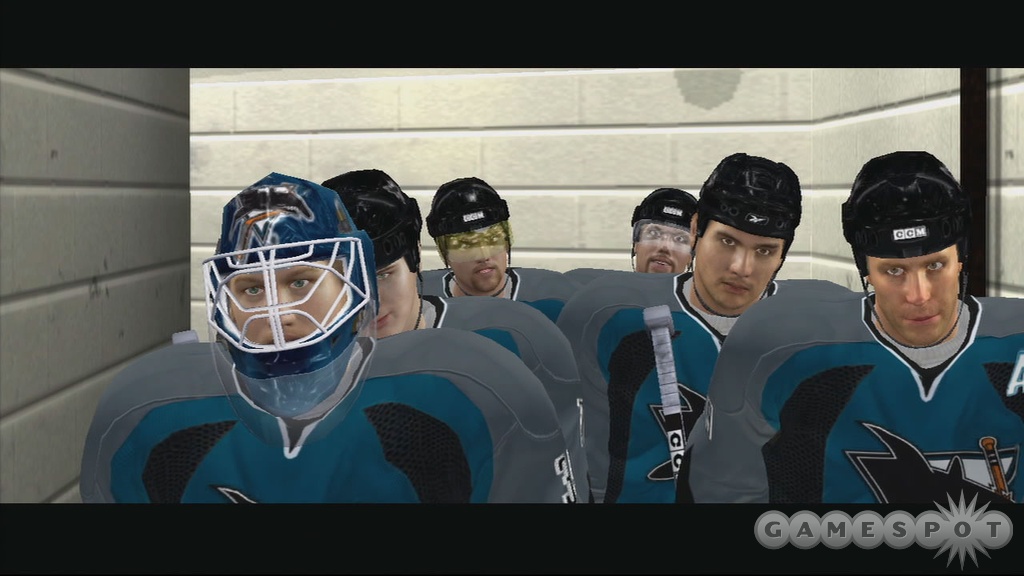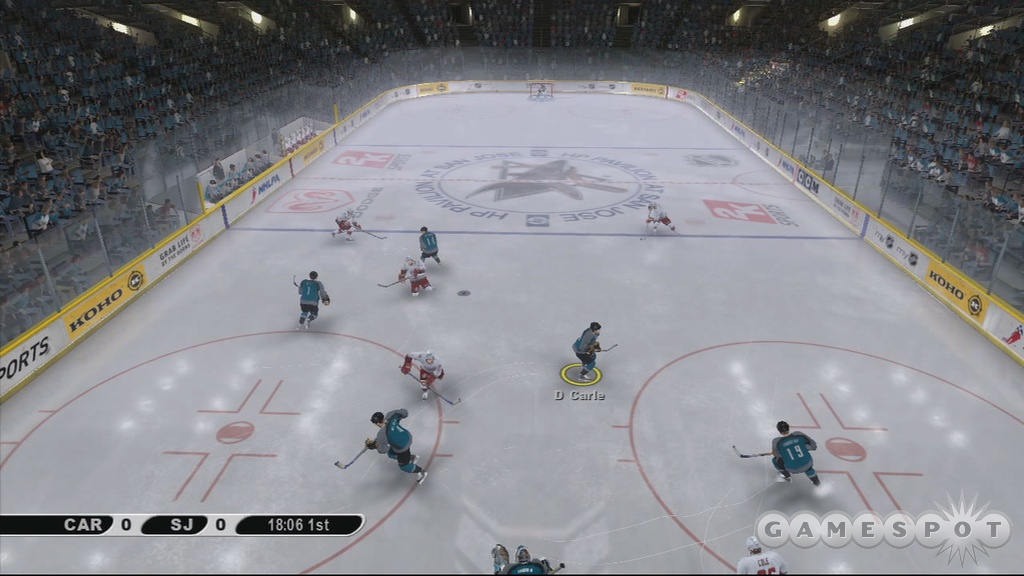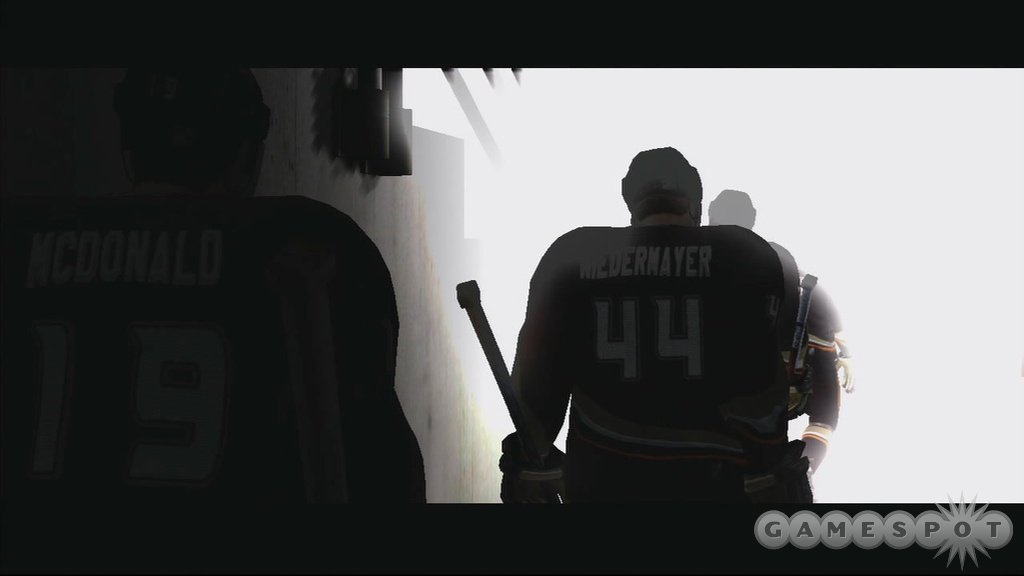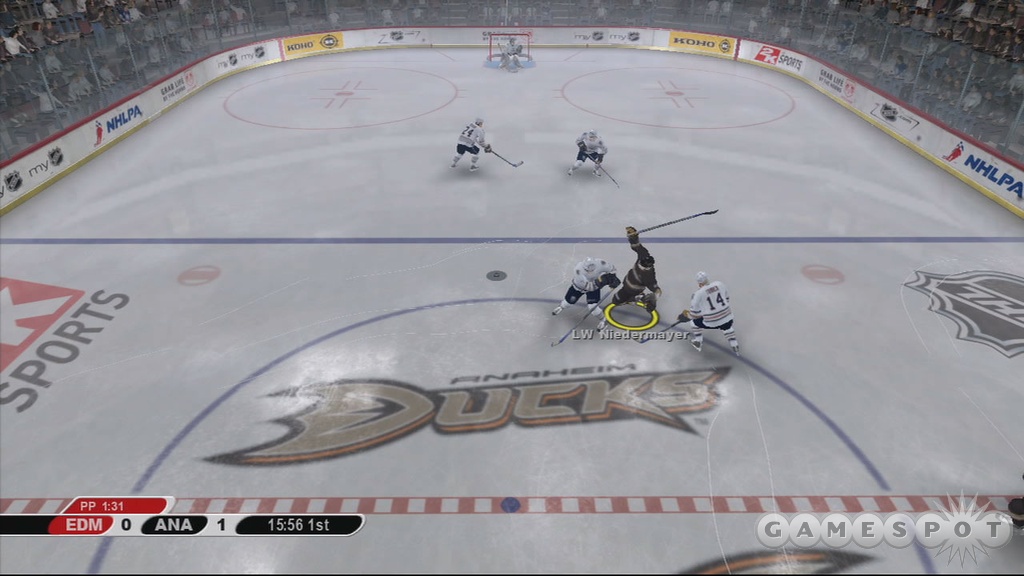To coincide with the launch of the Xbox 360, 2K Sports published a port of NHL 2K6 for the system in a fairly quick-and-dirty fashion. Sure, it retained the excellent gameplay of the Xbox and PlayStation 2 versions that had been released a couple of months prior, but it also retained practically the same visuals and features of its Xbox counterpart, leaving you with a three-times-as-expensive update of a game you probably already bought. Fans can breathe a sigh of relief that with NHL 2K7 for the 360, they haven't been dealt another cheap port. 2K7 is a game that seems to have been developed specifically for the 360 hardware, and it revamps the presentation of the game significantly, both on the ice and off. However, while presentation is the name of the game this year, the gameplay is mostly the same as it was last year. That's hardly an indictment, since for the last few years, 2K hockey has been the gold standard in this regard, but with so much emphasis on the presentation and with the competition making long leaps forward with its gameplay engine, NHL 2K7 won't offer you too many surprises.

The biggest, most elaborate change involves the excellent new on-ice presentation system. Titled "cinemotion," this optional feature strips away the normal game-time TV broadcast setup and audio commentary in favor of a more dramatic interpretation. A rousing orchestral score pipes up from the moment the game begins with the coach delivering his opening pep talk to the team. From there, it moves to the ice, changing distinctly in tone depending on what happens. If you're well behind in the game, the tone is more somber. If you're on the comeback, the music kicks in to higher gear. And if you win, you get the sort of happy, inspirational score you'd expect from the end of a good hockey movie.
While the music might sound a touch cheesy, it's added subtly enough that it never seems over the top. It's more Miracle than Mighty Ducks in its tone and delivery. In fact, if anything, it could stand to be a little more in-your-face. The default audio levels for the music are rather quiet, and sometimes it's tough to hear the music over the din of typical on-ice action. It's not a volume issue so much as understated musical sequences. But when it swells up at the key moments, you notice it, and it's an interesting and cool change of pace from the typical TV broadcast. It makes the on-ice cutscenes more entertaining, too. If for some reason you really miss the commentary but don't want to give up the music, you do have the option of turning the commentary back on via the options menu.
On top of the cinemotion feature, 2K7 also includes a new default camera angle that might just be the best one ever put into a hockey game. This parametric camera comes down at more of an angle than the typical top-down camera view, and turns and zooms ever so subtly depending on where you are on the ice, and what's happening. It's the sort of thing that casual fans might not even notice or take note of initially, but dedicated players should certainly appreciate this change, since it gets you just that much closer to the action without sacrificing any level of control or visibility.
These are all great changes, but from there, the additions begin to get fewer and further between. On the gameplay front, just about every feature from last year's game, including the crease control, icon passing, enforcer, and on-the-fly play-calling systems return once more, and they're all basically the same. The few additions to the gameplay engine include a new drop pass button, and the new pressure control scheme. The drop pass is assigned to the right bumper, and by pressing it, you'll pass the puck back through your legs to a nearby player. With the pressure control system, if you find yourself having particular trouble with on individual opponent, you can order your teammates to pressure them by holding down the left bumper and pressing the right control stick in the direction of that opponent. You can set the level of pressure via taps of the left bumper. A single tap applies light pressure, a double tap applies more physical pressure, and repeatedly tapping sends your players in for a very hard check. You can cycle through opponents easily enough by simply tapping the right stick around while holding the bumper.

These new controls, much like many of the previously mentioned gameplay control systems from last year's game, aren't exactly amazing by themselves, but when combined with the wealth of other available options, they help make NHL 2K7 one of the smartest games of hockey around, if not the flashiest. The basic gameplay engine hasn't really changed dramatically in the last couple of years, and those familiar with how 2K hockey plays will find yet another game of 2K hockey in this year's offering. Of course it's hard to call that a bad thing, since the depth of play, especially in the defense and core strategies of the game of hockey, is unmatched by any other available hockey title on the market. But when it comes to some of the faster and more exciting aspects of hockey, like scoring, offensive moves, and fighting, little has changed, and these aspects of the game engine are starting to show their age.
2K7's feature list is also quite familiar. Party mode returns with a familiar roster of hockey-based minigames; mini rink and pond hockey provide similarly goofy yet enjoyable distractions; and the skybox once again houses all sorts of unlockables, statistics, and other fun things. All the usual in-game skybox challenges are still on hand, though they mostly do not correlate with the game's achievement system. Fortunately, the achievements are a little better this year, and more are available. There are 17 in all, with the five from last year's game appearing once again, as well as several new ones, ranging from scoring a penalty shot on all-star difficulty or higher, to winning 100 games. You won't get many of these achievements without working at it, though there are a few fairly easy ones, too.
Franchise mode returns with most of the same great features introduced last year, as well as a few small additions. A hard salary cap has been implemented for all teams in the game, though it's not detailed in the ways of the NHL collective bargaining agreement. It is still displayed as a basic budget, and there isn't a realistic contract system in the game with regard to sending players to the minors or letting them go. You can't sign two-way deals, so you can send a player to the minor leagues or cut him outright, without having to put him through waivers.

On the plus side, the franchise mode still has an excellent rookie scouting system, a solid free-agency interface, and a minor-league roster to keep track of as the season progresses. Trade logic is still solid, if a bit overly frequent in its offers. Though you get plenty of offers right near the trade deadline, you also get a lot of offers throughout the season, perhaps a few more than is realistic. Injuries occur mostly in a realistic fashion, though you'll sometimes find a proliferation of minor injuries, like broken hands and bruised faces, and they sometimes take overly long to heal.
Other additions include a more-emphasized rivalry system that creates statistical bonuses and takeaways depending on how players play in games against their rival teams. We all know how much the NHL loves its rivalries, and with this system, players are physically affected by how they play in rivalry games. Another addition involves messages from the team owner. Along with receiving the typical day-to-day e-mails, you also have an option called "opportunity knocks." Here, you'll get specific bonuses and takeaways for various players based on news delivered to you by the owner via a cell phone call. For instance, if one of your players just got a sponsorship for a new energy drink, his attributes will go up for the next few games. Or, conversely, if one of your players looks ragged and tired, his attributes will go down for a few games. It's sort of random as to which way a call will go, and the only way to avoid bad ones is to not receive the calls at all. Of course, if you do that, you won't get the good ones either, so it's up to you to decide whether it's worth the risk. The bonuses offered are rarely significant enough to make it worthwhile to take time out of your schedule to check the feature.
The online-play setup is very much how it has been the last couple of years. Basic competition is available for two to eight players (four to a console), and you can engage in competitions of varying difficulty levels, with or without the crease control turned on. The party games and minirink modes are also available online. Most importantly, online league play is once again available for tournaments or full seasons and involves anywhere from four to 30 teams. The options for leagues haven't changed much, though with so many options available for scheduling and stat tracking via the 2K Sports Web site, it's hard to complain, considering there's still nothing else like it available in other hockey games for consoles. But it would be nice if in the future some little features could be included, like fantasy drafts, free-agent pools, and the like. As far as how the online modes play, our experiences playing the game online yielded little to no lag.
NHL 2K7 is a big step up graphically from its previous appearance on the Xbox 360. Whereas last year's game was basically an Xbox game with a couple of bells and whistles, 2K7 looks like a 360 sports game. The player models are a big improvement, with great-looking faces, body builds, and jerseys. Animations have also improved, with the skating engine in particular looking fantastic. The flow of the players on the ice is much better than ever before, and they move with more realistic momentum. There are some holdover animations, like dekeing and checking, that could stand a similar revamp, but they still look good. However, there are also some clunky looking animations, specifically some transitional animations that appear missing at times. Players will sometimes go from being doubled over to raising their arms cheering with no transitional movement in-between. Sometimes they'll go from standing prone to practically upside down instantaneously when checked. These aren't frequent issues, but they're noticeable. If you've got an HDTV, you'll certainly get the best of the graphical experience, but even on an SDTV, you'll notice the improvements to the game's visuals.

Apart from the cinemotion music, NHL 2K7 goes through a lot of the same audio motions as previous games. Bob Cole and Harry Neale are on hand again for commentary duty, and functionally, it seems like much the same commentary as in last year's game. It's sometimes informative, but it mostly serves as background fodder. The on-ice effects, however, sound excellent, especially the on-ice dialogue by the players and coaches, shouting to you and other players on the ice as the game goes. The game's indie-rock-heavy soundtrack is better than the average indie-rock-heavy soundtrack, if only by a small margin. It consists exclusively of bands from the Sub Pop record label and has songs by The Postal Service, Mudhoney, Hot Hot Heat, Band of Horses, Sealter-Kinney, and more. It's unusual to hear something like Band of Horses or The Postal Service in a hockey game, but you could do worse.
For what it's worth, as much as you could argue that 2K7 hasn't leaped forward from a gameplay standpoint since last year's release, there are a number of smaller, clever changes that add to what is already an incredibly deep package, and the new cinemotion feature gives a cool, new alternative to how sports games have played out over the last several years. When you consider how unimpressive the series' debut was on the 360 last year, 2K7 is leaps and bounds above what that game offered. It's familiar hockey, but it's great hockey, and whether you're a longtime fan or new to the series, it's absolutely worth checking out.